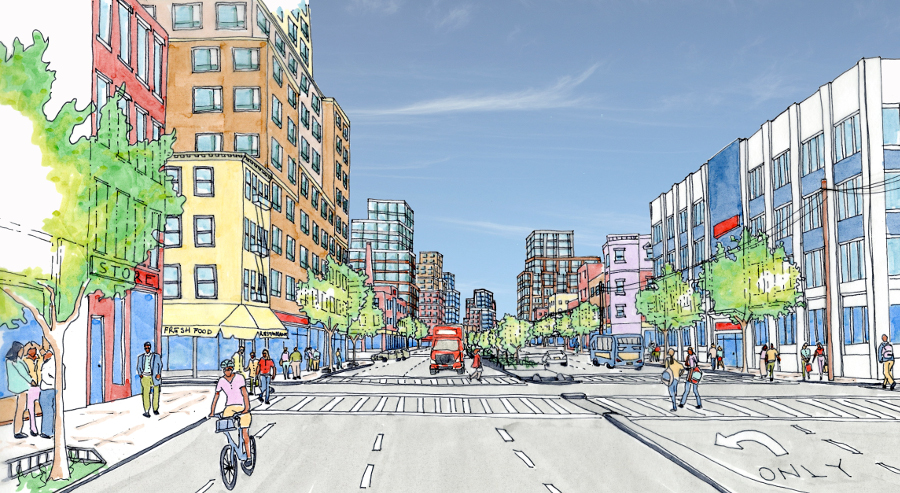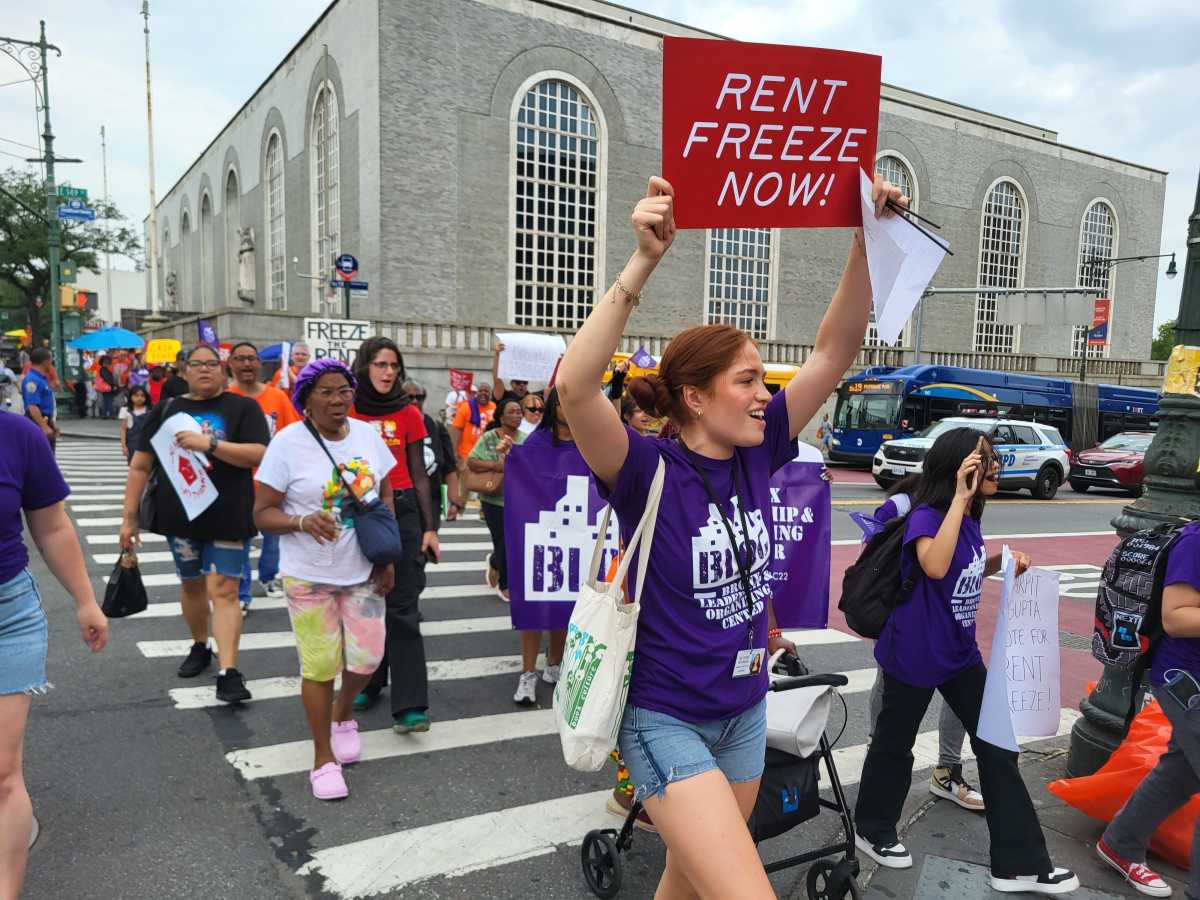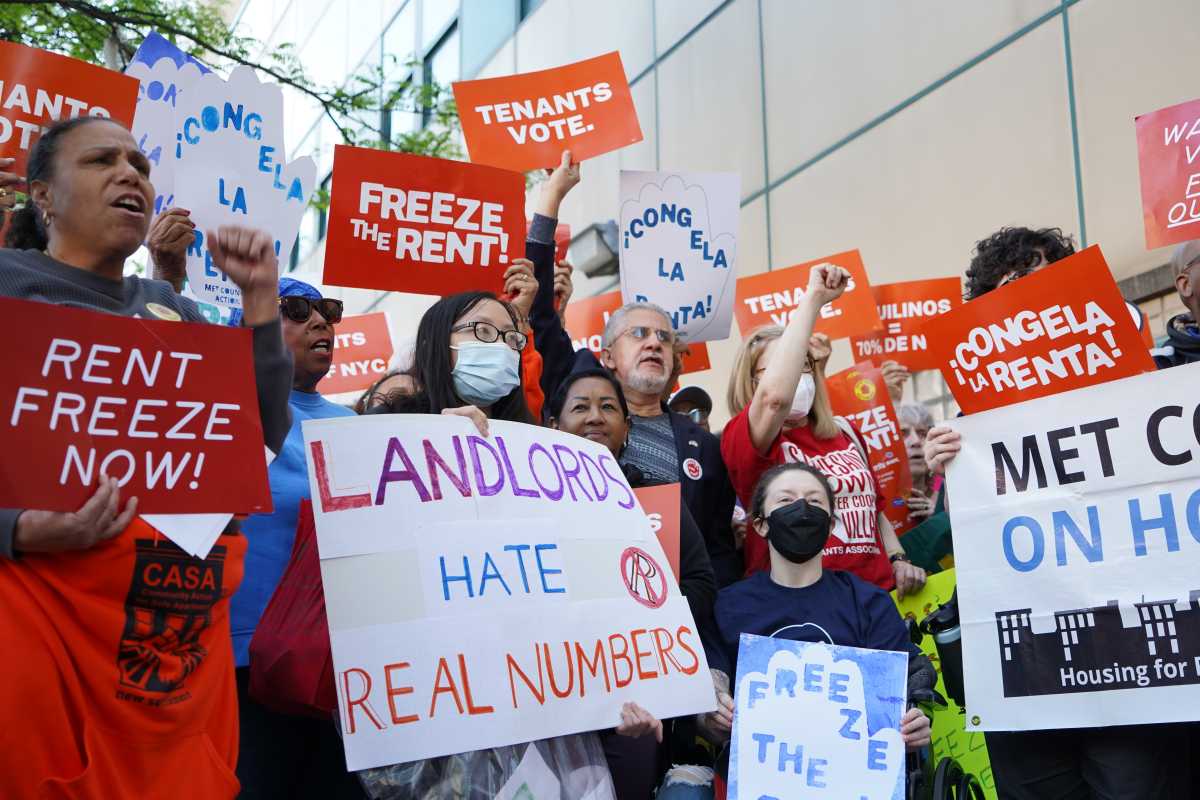East New York will be the first neighborhood to feel the effects of Mayor de Blasio’s affordable housing plan. The administration plans to rezone a large expanse of the neighborhood to make room for up to 10,000 affordable housing units. While this is good news for some, local lawmakers and community groups worry that they won’t get a say in their neighborhood’s renovation.
The plan calls for new affordable and mixed-income housing and community facilities, as well as an increase in commercial development. Zoning will take place along some of the neighborhood’s busiest thoroughfares. Along Atlantic Avenue, 12 to 14 story medium-density developments will be allowed, meaning that it is a residential zone that allows a higher density of population. Along Pitkin Avenue, the same type of developments will reach eight to 10 stories. Along Fulton Street and Liberty Avenue, new developments will reach between six to eight stories. Along the quieter, more residential streets, contextual zoning districts will be established to preserve the character of the neighborhood. Here is a map of the plan East New York Map.
The Department of City Planning (DCP) said that it is, “working with all stakeholders on the East New York proposal, including Councilmembers (Rafael) Espinal and (Inez) Barron, to create the best plan possible for the community. This process represents a new approach to neighborhood planning – a comprehensive approach that recognizes the many facets of what makes New York City neighborhoods great – affordable housing but also access to good jobs and stores, schools and parks.”
Likewise, Espinal and Barron announced The East New York Community Plan. The proposal includes plans for rezoning, an increase in affordable housing, and job growth in the areas of East New York, Cypress Hills, and Ocean Hill.
In conjunction with Housing New York, the Mayor’s plan for affordable housing, the Community Plan will seek out new locations for potential housing. The plan also calls for ways of improving the streets and sidewalks of East New York, as well as making community resources and services more readily available.
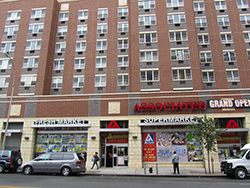
The plan can be broken down into four parts: land use and zoning, affordable housing, economic development, and community resources.
Arguably the most important part of The East New York Community Plan is its goal of preserving existing affordable housing. The newly-assembled Tenant Harassment Prevention Task Force will protect tenants from being displaced. Landlords harassing tenants in East New York will face charges. Tenants in need of legal assistance will receive $36 million worth of free legal representation in housing court as included in the recently passed Fiscal Year 2016 budget.
Important steps are being taken to ensure that the affordable housing stays affordable. Financing and tax incentive programs are being expanded. Buildings with regulatory agreements set to expire will have their agreements extended. The Green Preservation program will provide energy efficient and cost effective upgrades to older buildings. The quality of the housing will be protected by increasing the number of inspectors and enforcing building codes.
A major goal of the plan is to develop about 1,200 units of affordable housing within the next two years. Over the next 15 years, at least 50 percent of housing built in the rezoning area will be affordable to East New Yorkers.
The plan’s steps toward economic development ties in with its plans for affordable housing. Programs will be designed to support small businesses at the ground floor of housing buildings. Increased opportunities will be made available to minority-and women-owned businesses.
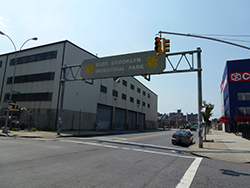 The plan aims to strengthen existing business while promoting new ones. Industrial business growth will be encouraged in the Industrial Business Zone, just outside Broadway Junction. Local community organizations will be consulted with to assess the current condition and needs of the area, particularly Pitkin Avenue and Fulton Street.
The plan aims to strengthen existing business while promoting new ones. Industrial business growth will be encouraged in the Industrial Business Zone, just outside Broadway Junction. Local community organizations will be consulted with to assess the current condition and needs of the area, particularly Pitkin Avenue and Fulton Street.
In partnership with Women Entrepreneurs NYC (WE NYC), local women will receive support in opening their own businesses. FastTrac Growth Venture Courses will be provided in East New York to teach business training. Small businesses will get the necessary guidance in lease negotiations and execution. Local residents will have access to information about job openings through the Community Partners Program.
The plan calls for a long list of improvements to community resources. There is a plan in place to build a new 1,000-seat school, using city funds allocated to the area. Construction will also take place along Atlantic Avenue. The Atlantic Avenue Safety Improvement Project calls for a new planted median with pedestrian islands to allow for a safer corridor.
The plan will make improvements to transportation as well, including the Broadway Junction Project, which will provide easier access to the transit station. Those who commute on their bicycles will also see a change as new bike lanes are added along Pitkin Avenue. The area’s parks will get a makeover, including new synthetic turf and upgrades to playground equipment. Possible locations for new parks will be looked into as well.
All aspects of the plan have the potential to be affected by the feedback of East New Yorkers during outreach events and suggestions from community organizations. Barron and some local residents, are concerned that the affordable housing may be beneficial to the “gentrified class” instead of low-income residents.

“We’ve been working very closely with agencies, keeping in touch to make sure the residents’ concerns are being met at the table,” Espinal told DNAinfo.
The rezoning facet of the proposal is subject to public review, or the Uniform Land Use Review Procedure (ULURP), in the fall. During the seven month-long review process, community boards, the Borough President, and the City Planning Commission will hold hearings.
During this time, the public will continue to be able to voice their concerns or comments. The proposal’s plans for affordable housing preservation and economic development programs will not have to undergo the ULURP process, and therefore, may be in effect sooner.
“This holistic approach has included multiple opportunities for input, the latest of which was an East New York town hall hosted by the two councilmembers. This is an ongoing process and we look forward to the input of the community as we refine this plan,” said a DCP spokesperson.


